“They had no choice!” Horse in battles and campaigns (part one)
(Job 39-19)
"Praise of folly"
It is simply amazing what abysses of human ignorance are opening up today thanks to the capabilities of the Internet. I read recently in the comments that the Iron Age, it turns out, preceded the Bronze Age (and of course, the copper-stone), that there are no reliable historical data, and I do not even know how people come to such "conclusions". Or that the finds in the ground, well, those that are made by archaeologists ... just buried in order to dig up and sell later! Another "discovery" is worth it: horses, it turns out, have been imported to Europe from America since the XNUMXth century, and before they were in Europe ... there simply weren't.
One of the oldest images of a rider on a horse ...
Golden crest from the mound of Solokh. IV c. BC er Hermitage. The massive comb weighs 294 g, its height is 12.3, and the width of 10.2 is cm. Nineteen long tetrahedral teeth are joined by a frieze of lion figures. Above him is an amazing sculptural group depicting three warriors fighting. They are long-haired and bearded, and are dressed in characteristic Scythian clothes - kaftans, long trousers and shod in soft boots. Two of them, over kaftans, are clad in shells, and at the equestrian Scythian, presumably the king, he wears a typical Greek helmet, and on his shins are knomeid-leggings. All the weapons of the Scythians — shields of various shapes and designs, gorits-cases with bows and arrows, short Scythian akinaki swords in the sheath, the spear of one of the warriors — were transferred with great precision. The horse depicted on the ridge is small in size and it is obvious that the warrior is sitting on it, not using stirrups.
On the same Internet, I’m dialing the question: “How many people in Russia need urgent psychiatric help?” And the answer is immediately: “According to WHO, in the world by 2020, mental disorders will be among the top five diseases leading to disability. In Russia, the situation is complicated by an increase in the number of neurotic disorders associated with alcoholism, poverty and stress at work. According to research, every third Russian has a mental or neurotic (depressive) disorder. In Russia, up to 40% of the population have signs of any mental impairment. The share of those who need systematic psychiatric care accounts for 3-6% of the population, and the number of the most severe patients is 0,3-0,6%. ”(Http://medportal.ru/mednovosti/news/2017/06/15/682psycho /)
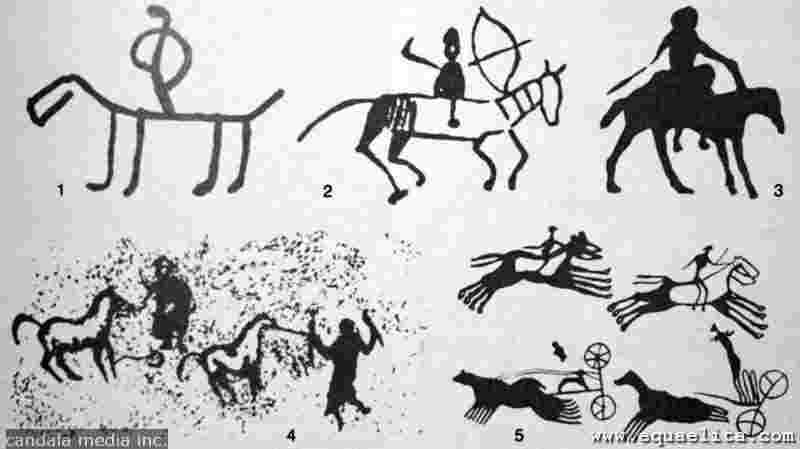
1. Horse rider image (near 3000 BC) from Torre de Bredos near La Coruna (Northern Spain)
2. Archer on a horse, rock drawing (Tibet), around 1200 BC. er
3. Horse rider, cave painting (Sahara), around 1000 BC. er
4. Taming wild horses, cave painting (Sahara), around 1000 BC. er
5. Riders on octopus horses and chariots, cave paintings (Central Sahara), around 1000 BC. er
However, it happened by the way. Simply, as an indicator that not all of us and not all are fine with brain activity. But here is the history of the horse ... After all, this is really really interesting, because who, if not a horse, made man the actual ruler of the planet? So you can even praise such people for ... "their faith", because it gives us the opportunity to tell how it really was. Moreover, the role of the horse in the history of mankind was indeed exceptionally great. Yes, cats kept his grain and health, preventing epidemics, which were carried by rodents. Dogs are hunters and watchmen, even under Tanks went to bed, trusting their masters. But most of all, it was the "greyhounds" that made for man. Without them, a person could not have mastered the vast expanses of the Asian steppes and North American prairies. Without a horse he would have no knights, there would be no great empires, the development of mankind has stretched for many millennia.
Temple of Abu Simbel in Egypt. Relief with the image of Pharaoh on the chariot.
So horse and war. The horse and the man in the war, the Scythians and horsemen of Alexander the Great, the guns of Attila and the knights on the mighty distributors - all of them will pass before us in a whole series of articles in which all this will be described in as much detail as possible.
About the "conspiracy of paleontologists", "The Stone Age stories" by HG Wells and the sexy girl Eile ...
Well, we will have to start with the topic we are not very characteristic. From paleontology - the science that studies the fossilized remains of ancient animals. And if the ancient artifacts, as some think, someone buried in the ground for the sake of their antiquity, then someone, and paleontologists, all the more should be suspected. After all, their bones and coprolites of dinosaurs are even older. That's just not clear how and for what purpose they do all this. However, if there is a “conspiracy of watchmakers”, a “Judeo-Masonic conspiracy” and even a “conspiracy of professional historians”, why not be a “conspiracy of paleontologists”? Around one "conspirators", how interesting, and it may be scary to live, is not it?
Assyrian relief from Nimrud, Central Palace, approx. 728 BC British museum.
Whatever it was, and having dug many tons, and there tons - thousands of tons of earth and sand, paleontologists found out that not only dinosaurs but also the ancestors of modern horses lived on Earth for a long time - 64-38 million years ago In Europe's forests lived the chiracotherium, and in North America, the eo-hippus (“early horse”) was an animal the size of a fox or a little more. Not only were they similar to modern horses, but, nevertheless, these were their ancestors.
The climate was changing, the vegetation was changing, and 38 – 26 a million years ago a meso-hippus (“middle horse”) appeared larger in size. Even larger was merigippus (27-26 million years ago), and then plio-hippus (5 – 2 million years ago.) Finally, quite recently, one might say, an equus appeared in North America — the immediate ancestor of modern horses, the size of a modern pony.
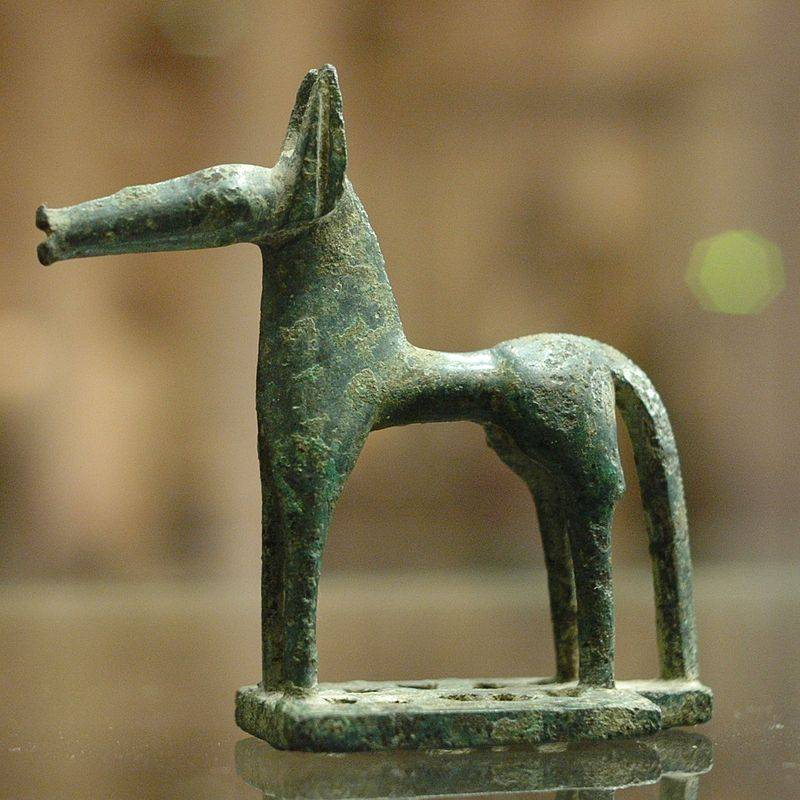
Bronze figure of a horse from Olympia, approx. 740 BC Louvre
Through the so-called Beringia - the isthmus existing in antiquity in the Bering Strait region, the ancestors of horses moved from America to Asia and vice versa, and after them came the people who hunted them. And they hunted so successfully that in North and South America in the post-glacial time all the ancestors of horses disappeared.
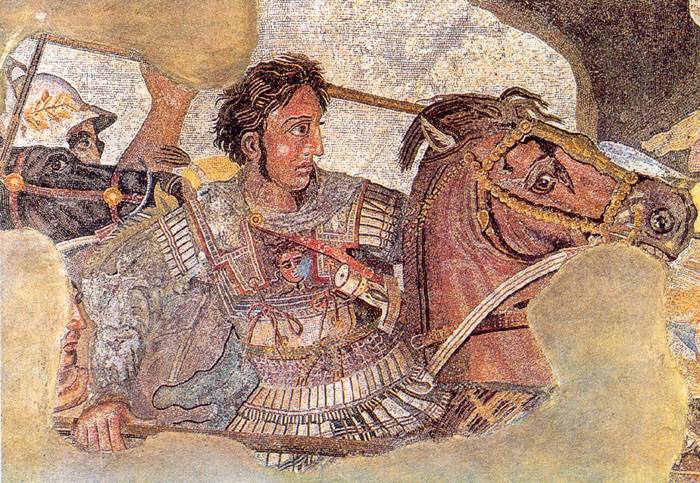
Alexander of Macedon on his Bucephalus. A fragment of a mosaic of Pompeii.
Well, the primitive horses that left North America soon spread throughout Asia, Europe and Africa. They lived both in areas with dense grass cover and soft and fertile soil, and on rocky mountain slopes, in the zone of arid steppes and deserts. According to these habitat zones, different types of horses appeared. Those that lived among dense vegetation and on wet soil, had a strong body and wide, relatively soft hooves. Mountain horses were small, graceful, had narrow and firm hooves. Their suit also matched the color of the environment. In forest areas, dark-colored horses survived, while it was more advantageous for inhabitants of deserts and steppes to have a yellow or gray color.
Alexander of Macedon on Bucephalus (sarcophagus from Sidon).
Information about how looked equus - the ancestor of modern horses, as well as donkeys and zebras, of course, not preserved. But we know what his descendants looked like - wild horses: the South Russian steppe horse, also called the steppe tarpan, the forest tarpan and the Przhevalsky horse, also known as the oriental wild horse. These types of horses two hundred years ago lived in Europe and Asia, but today they have almost completely disappeared. Here, except that Przewalski's horse is bred in our zoos. She has a height of withers to 130 cm and she is covered with thick yellow-gray hair. The head is massive, on the neck is a dark brush of a rigid mane and the same dark legs. The South Russian steppe tarpan, or simply tarpan, was sleeker than the Przewalski horse. This horse had an ash suit and a black “belt” along the entire back. Ponies appeared in the north of Europe, the Shetland Islands and in some other places with extreme climatic conditions like tundra, where so-called tundra ponies lived. All these three types of horses, gradually interbreeding among themselves by the will of man, became the ancestors of all known horse breeds today.
The skeleton of the eohyppus. The remains of these ancient horse-like are found all over the world.
But how did the horse become domestic and where exactly did it happen? HG Wells, the author of wonderful science fiction and social novels, was one of the first to try to answer this question in his Stone Age Stories. It makes no sense to retell their content. Who cares - will find on the Internet and read. It is important to emphasize the idea of the author: everything could happen by chance. And then ... then something similar to what is described in the story will repeat more than once and end with domestication of the horse on which people began to ride.
The column of Trajan with the image of the Roman soldiers and their horses is a unique monument of the era of Traian's wars in Dacia.
An English writer Gene M. Auell described her version of this event in one of the books of her series of children of the Earth, which is called “The Valley of Horses”. Alone in a cave on the edge of the inhabited world, a girl from Cro-Magnon tribe sheltered a small horse and raised it. Then she learned to ride her, and when a foal appeared at the horse, she raised him. Then Ailu was found by a man of her biological type and ... taught her many interesting things, and she taught him to ride a horse.
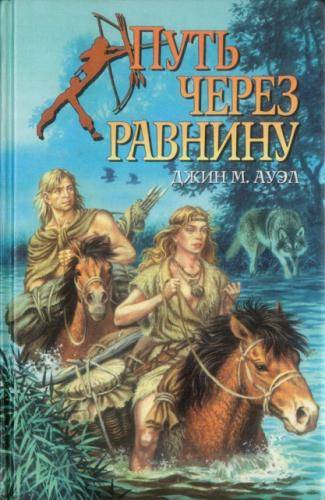
"The path through the plain" - tells about the long journey of Eila and her lover Jandalar to his tribe. In general, the books in this series are quite funny. And Eila came up with a lancer, and she tame the horses before anyone else. But in general, the series of the novels “Children of the Earth” is very informative.
In total, the series includes as many as six large-page novels: "Clan of the Cave Bear", "Valley of Horses", "Mammoth Hunters", "Mammoth's Hearth", "Path through the Plain" and "Under the protection of the stone." In fact, it is an encyclopedia of primitive history, since Gene Aell is not just a writer, but also a scientist, and much of her novels are just traces of various monographs. The only drawback of the novel is the apparent excess of erotic scenes, but what can you do with it? Although on the other hand, what else did primitive people do at their leisure?
Among the Christian saints there are no beast-headed "gods"; this is the "privilege" of paganism. But there are no rules without exceptions. Those in the pantheon of Christian saints became St. Christopher. There are no saints with the heads of a cow, a dog, but there is a saint who wished to become a horse. It says a lot ... Wall mural from the Cathedral in Sviyazhsk.
"Alosh", "Kaval", "Cheval" and "spotlight" ...
In any case, the horse was domesticated and - judging by the burials with the horse (this is already a "paleontological conspiracy" ended and the "archeologists' conspiracy began!"), It happened in the region of ... the southern Russian steppes! The very word "horse" Eastern Slavs borrowed from the Turks, which sounded like "alosh". Both of them closely adjoined each other just in this region, so that the interpenetration of cultures took place, of course. But the words "horse", "mare", "stallion" are considered to be words of purely Slavic origin, their roots go back to the ancient Indo-European proto-language.
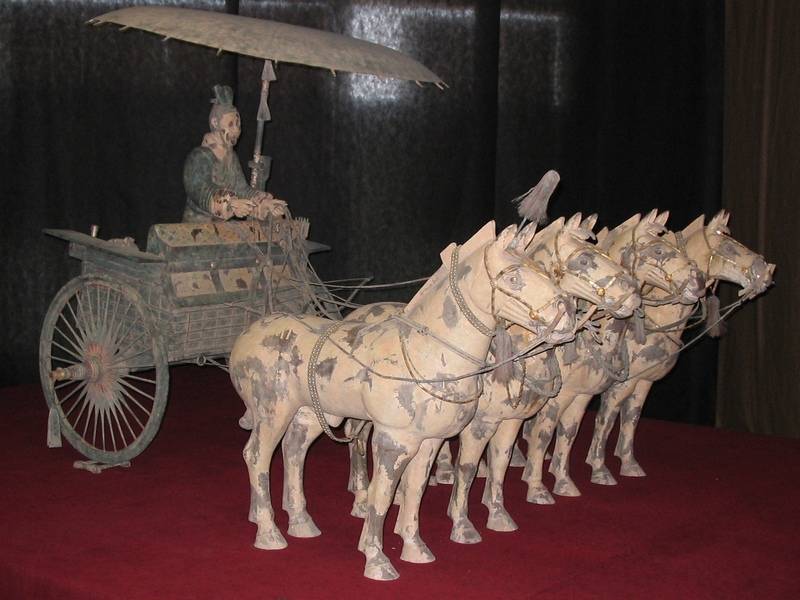
Among the soldiers of the terracotta army in the tomb of Emperor Qin Shi Huang there was such a chariot drawn by four horses.
In Italian, horse is caval, hence cavalier, cavalry; in Spanish - cabal, therefore - caballero, in French - cheval, hence chevalier, that is, horseman, cavalryman. Therefore, when Cardinal Richelieu in “The Three Musketeers” A. Dumas addresses D'Artagnan: “Chevalier D'Artagnan!”, The literal translation should have read: “The Horseman D'Artagnan!” But in Arabic the horse is called “headlight” ", Respectively, the art of riding was called" Furusiya ", but they also called their knights Faris, that is, horsemen!
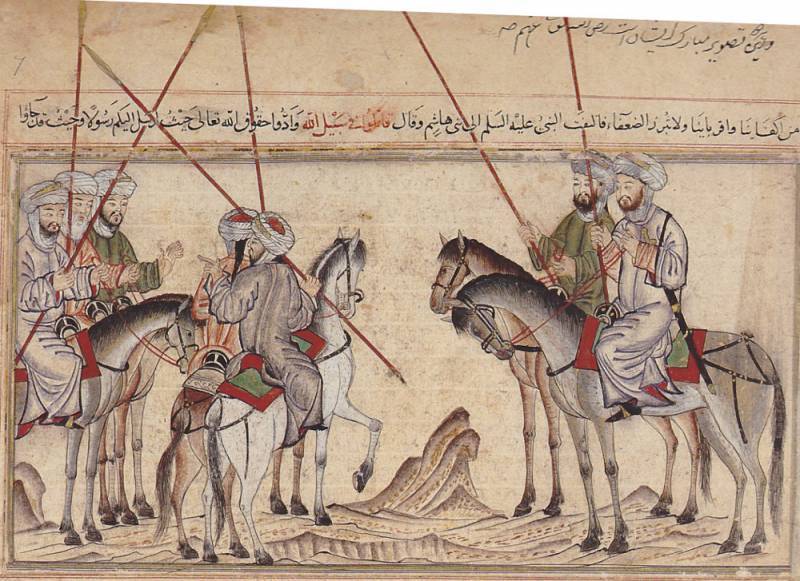
Very early on they met horses and Arabs. This is an illustration from the Universal History of Jami al-Tawarih, 1305 - 1314. The Prophet Mohammed exhorts his family before the Battle of Badr and they are all on horseback. (Collections Khalili, Tabriz, Iran)
To be continued ...
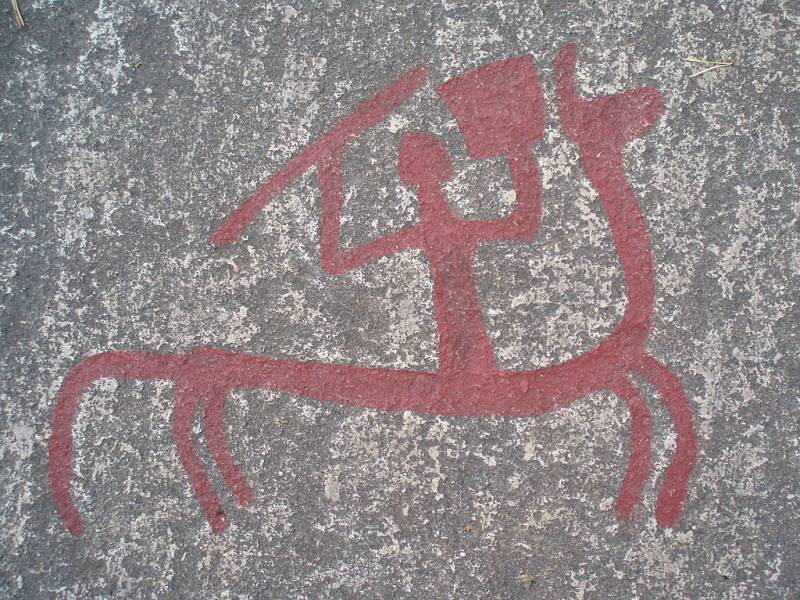
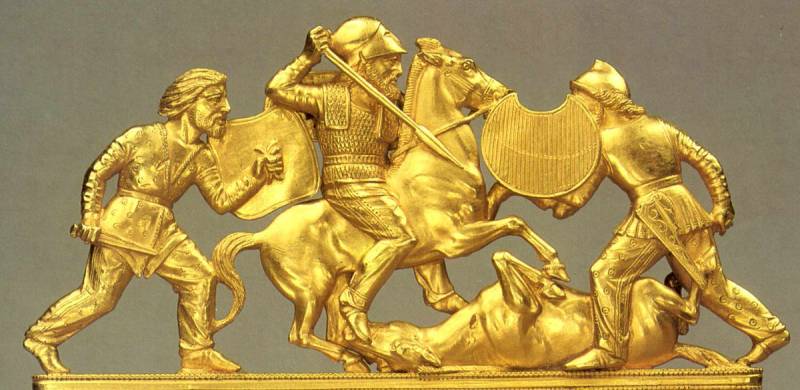
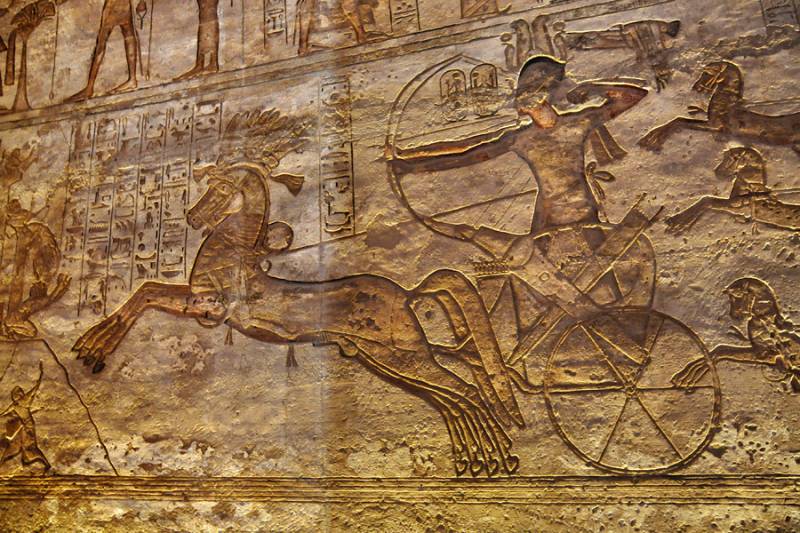
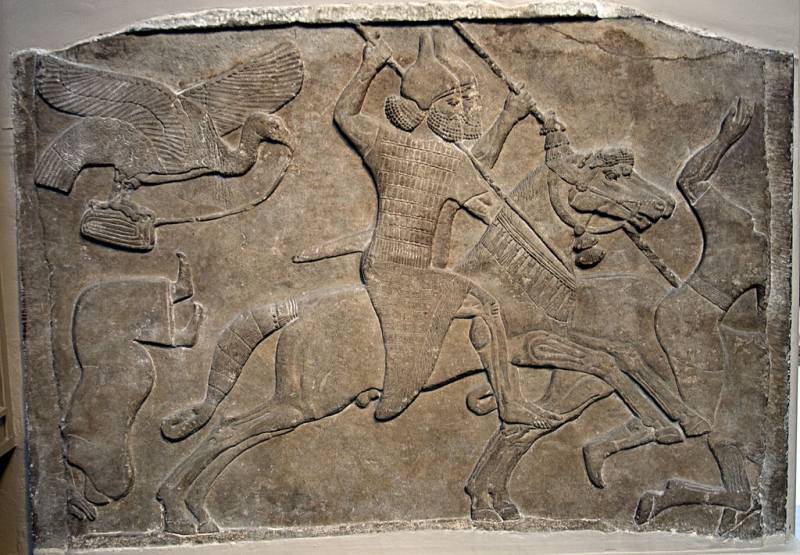
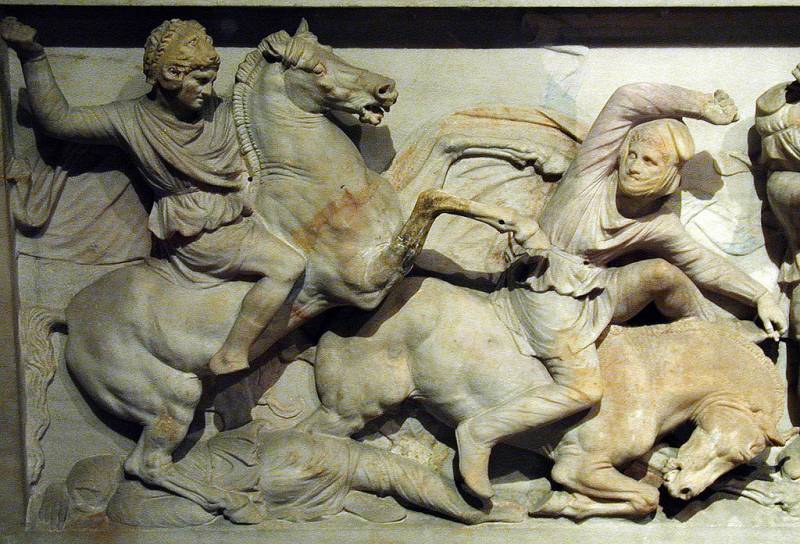
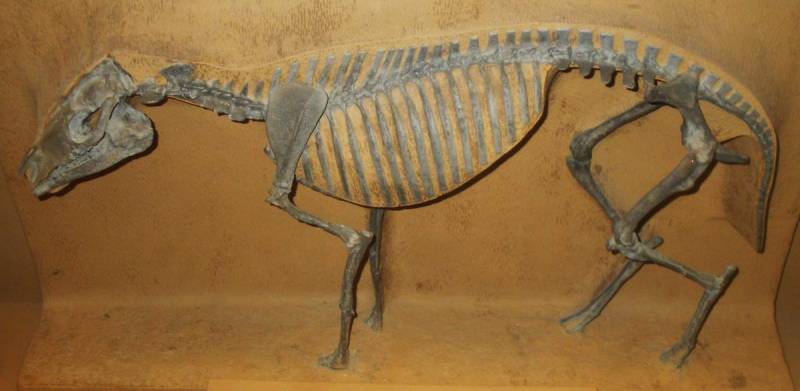
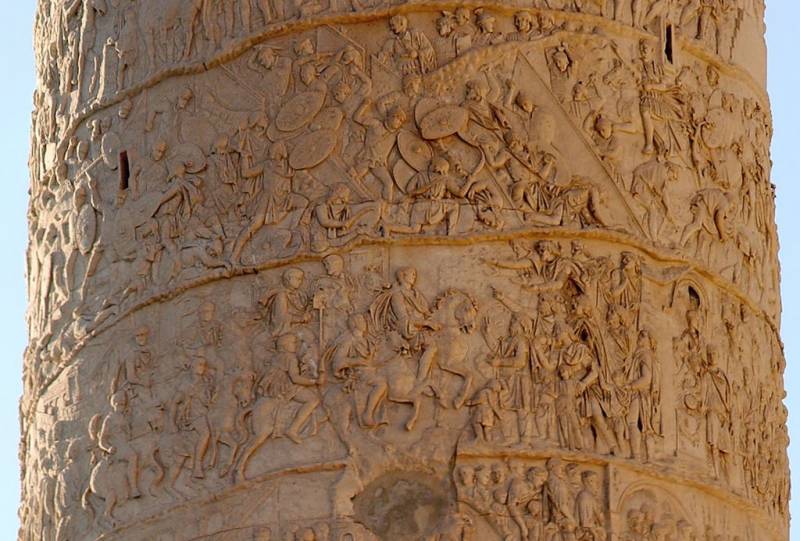
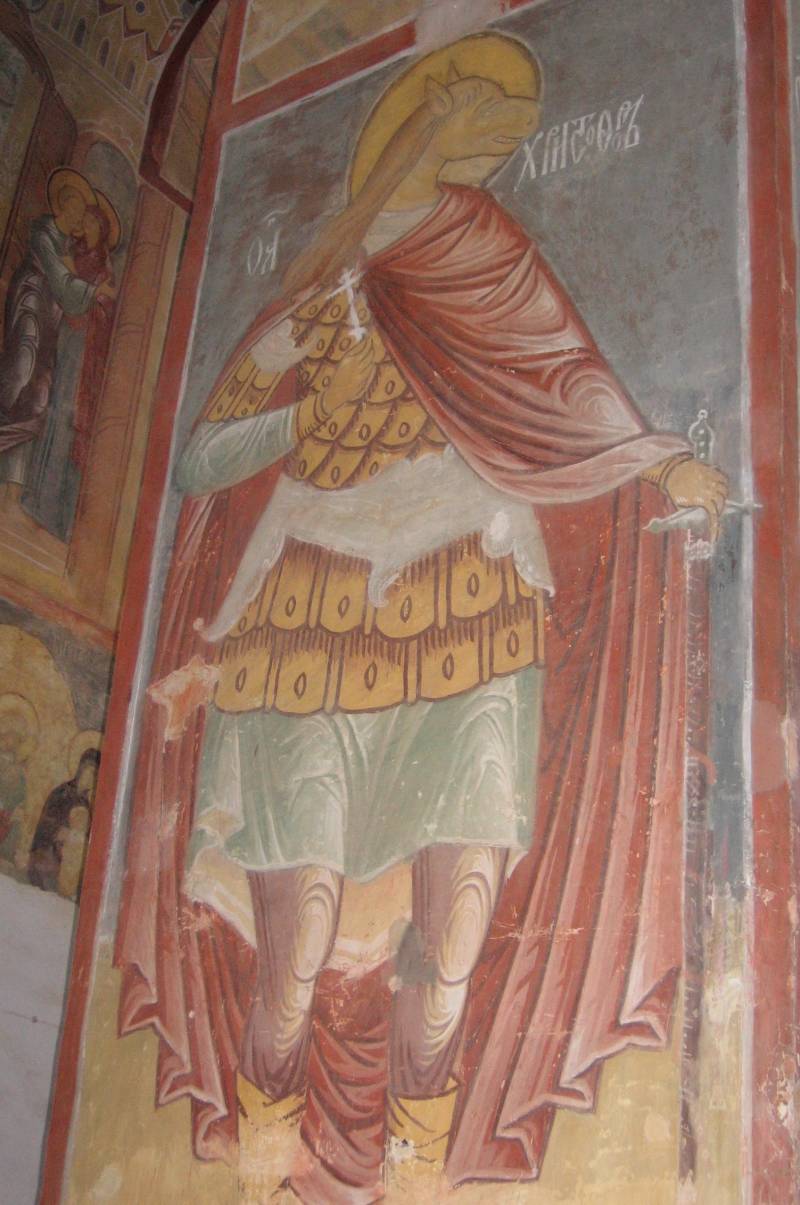
Information